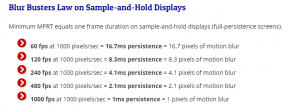erek
[H]F Junkie
- Joined
- Dec 19, 2005
- Messages
- 10,871
Follow along with the video below to see how to install our site as a web app on your home screen.
Note: This feature may not be available in some browsers.

GTX 480 -> GTX 580 (Fermi -> Fermi 2) = +11% (die shrink)
Pretty good table, the only thing I would change is that the Maxwell to Pascal was a double Die Shrink as well as a new arch. Remember 20nm was cancelled due to problems. This skip really messed up AMD as they didn't have the resources to switch up.
Turing was built on a mature 14nm process node. Ampere should be even cheaper to build , once they get yields up.
Yeah MS is working on bringing Ray Tracing to the DX12 spec and it is currently available in the insider preview builds for windows10 developers. NVidia has the instructions on their site how to install the tools to get it going.
Actually tensor cores can be used for raytracing.
Again, tensor cores CAN be used for raytracing. That's how it all started with DXR and Volta. Remember the SW reflections demo? It was done on volta initially.
You can tell that Nvidia threw their Ray-Tracing technology together when the frame rate of games dramatically drop with the feature on.
Except they do.incorrect, both are 40nm
Kepler was also a uarch+shrink from fermi
Turing is build on 16nm+++ ala 14nm
I think you're 12 months behind, 1.1 is a revisional update to the already available DXR spec.
No, actually, they can't.
The tensor cores are purely 16fp matrix multiplication
Cards that can perform raytracing without RT cores are doing so purely on the general purpose shaders, Volta included. Tensor is good at artifact removal and does exactly that.
You keep saying this, but I do not think you know what you're talking about from a technical standpoint.
From Nvidia
"Meanwhile NVIDIA also mentioned that they have the ability to leverage Volta's tensor cores in an indirect manner, accelerating ray tracing by doing AI denoising, where a neural network could be trained to reconstruct an image using fewer rays, a technology the company has shown off in the past at GTC."
You have no idea what you're talking about
Except they do.
You can do dxr with all 3, the fact that RT cores are specifically designed for it hence much more efficient doesn't mean it can't be done any other way.
Think a little harder here. Why did the mining craze benefit Nvidia but not AMD? Because AMD's cards are too slow. Simple as that. Nvidia is charging more for an inherently superior product. The other bit which I've mentioned a thousand times is that your baseline company, AMD, sells every single GPU for a loss. If not for their CPU business being able to subsidize their GPU losses, AMD would either be out of business entirely or would have raised their prices.
I loved doing raytracing on the Amiga. Great way to spend the weekend rendering 1 frameI could do raytracing with the computer that flew on the Apollo 11...
I'd just never live to see the results
Except they do.
Except they do.